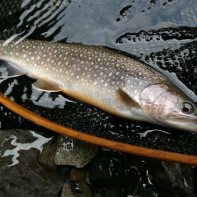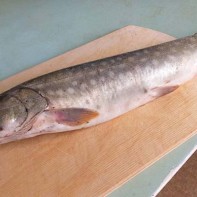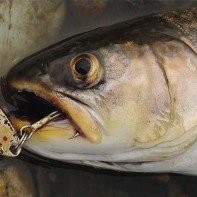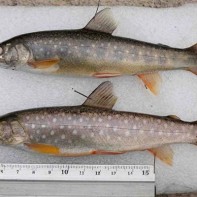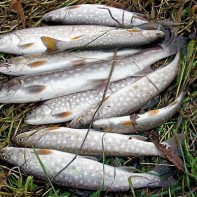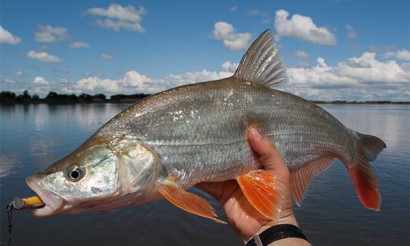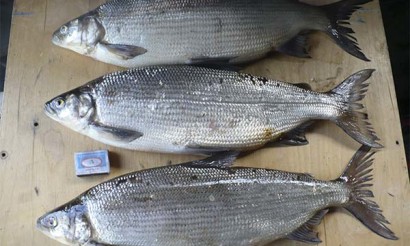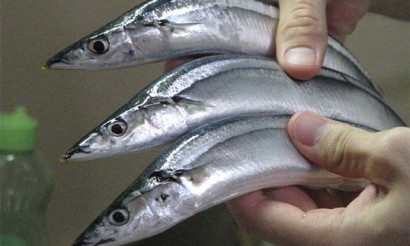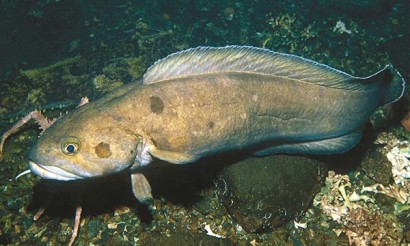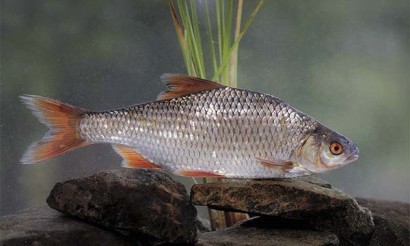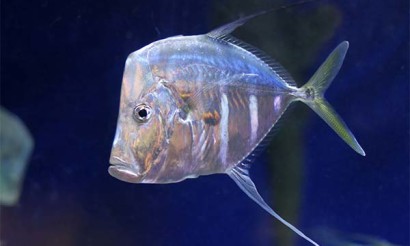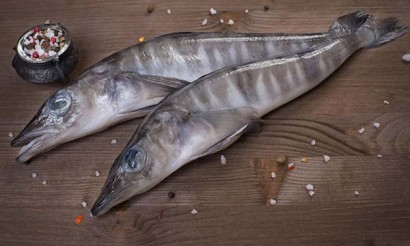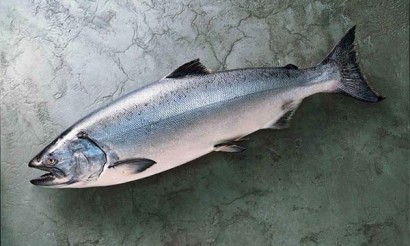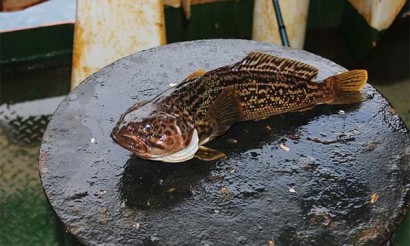Sea bream: photo, description, useful properties and recipes
The kunja fish is a passable subspecies of loaches - an Asian endemic and an active predator with dietary meat. Deliciously cooked fish not only provides gastronomic pleasure, but also saturates the body with rapidly digestible proteins, vitamins, minerals, healthy omega-3 fatty acids.
- Kunja: what kind of fish it is, how it looks and where it is found
- What it looks like
- Where does it live
- What does it feed on?
- Breeding process
- How it differs from the char
- How to fish for Siberian grouper: when, where and on what?
- When to catch
- Where to catch
- What to catch
- Composition and calories
- What is useful for kunja meat
- Harm and contraindications
- How to choose and store
- Where to buy and how much costs
- How to cook fish kunja delicious: Recipes
- In the oven
- In the frying pan
- On the grill
- How to salt fish
- Recipe for kunja fish soup
- Q&A
- What does kunja taste like?
- Fatty or not?
- Are there many bones in the fish?
- River kundzha and kumja: same thing?
Grouper: what kind of fish is it, what does it look like and where does it live?
According to scientific taxonomy kundzha belongs to the family Salmonidae, genus Holts. Fishing value have individuals with length 0.3-0.6 m with a body weight of 500 g. The biggest specimen caught near Magadan had a maximum body length of 1.5 m.
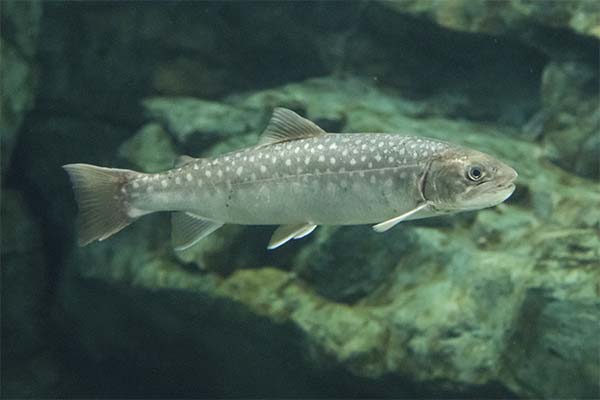
The kundzha quickly adapts to environmental conditions and easily modifies itself. But it is not raised artificially. The difficulty lies in the fact that two types of reservoirs - fresh and salt water - are required for weight gain and reproduction.
What does it look like?
The folk names for coho salmon, naked or mottled white salmon, are due to the peculiarities of their appearance. The elongated, prostrate body of the fish is covered with smooth, very fine scales.
The large head has a large mouth with a sickle-shaped upper jaw that extends beyond the posterior edges of the eyes. The coloration of the back is dark, the sides are silvery brown with large white spots, and the belly is white.
Where does it live
The fish is common off the Japanese islands of Hokkaido and Honshu, southwestern Bering Sea, northern Japan Sea (Sakhalin, Kurils, Shantar and Komandor Islands), all along the Okhotomor coast of Kamchatka. Smaller herds are found in the Amur River and Peter the Great Bay.
On the island of Hokkaido is the only resident form in Lake Shikotsu.
What it eats
Fish occupy the first place in the kundzha's diet. The salmon eats minnows, smelt, fry of their species, gobies, and freshwater shrimp. Juveniles feed on insects, mizids, and maggots.
Reproductive process
A silver salmon reaches sexual maturity after 2-3 years of life. The migratory char spawns in rivers and lakes from June to September, depending on weather conditions in the region.
For spawning the fish choose floodplain tributaries and bays with gravel bottoms in the lower and middle sections of the rivers. Females use their tails to make hollows in the ground where they hatch eggs. After fertilization by males the parents cover the eggs with pebbles.
During the spawning period, depending on size and weight, females produce 700-6700 large light yellow eggs 5 mm in diameter.
Larvae hatch in March-April. Young fish stay in the rivers for at least 2, more often 3-4 years. The first year fry keep in flocks in shallow water, by winter they move to deeper parts of the rivers. By the first wintering, they grow to 10 cm. The mature specimens leave freshwater reservoirs in spring.
The average lifespan of migratory fish is 14 years.
How it differs from the char
Kunge differs from the arctic char By narrower boundaries of its habitat. The char is not only found in the Pacific Ocean. It is found throughout the Arctic Circle, spawning in Norway, Iceland, in the rivers of Siberia, Canada, and Alaska.
Externally, char resembles coho salmon. It does not have white spots on the sides, as kundzha have, but dark ones. During the spawning season, they turn red. Another distinguishing feature is the number of gill rakers. The char has more of them.
How to catch coho salmon: when, where and on what?
Cautious fast char is of interest to amateur anglers. When swallowing the bait, the fish makes a sharp jerk that can rip the tackle or tear the line.
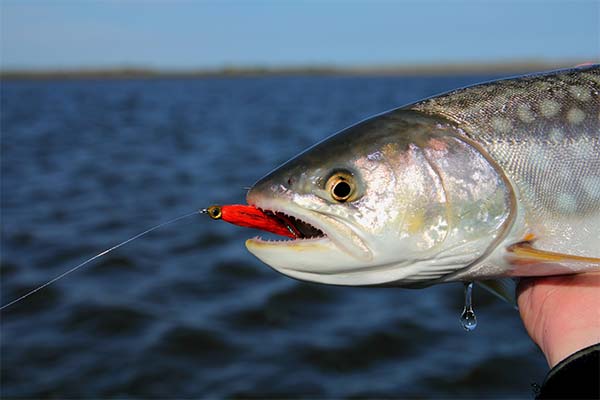
When to fish
Passerine char are caught in spring by float fishing rod, in summer from the shore, from a boat by spinning and with surf rods. In winter, the fish is caught from under the ice with a short rod on a plumb line.
Active bites occur half an hour before dawn and in the evening from 8 o'clock until dusk. The dead season is just after the ice breakup.
Where to catch
In summer, the fish hunts in the upper layers of water at shallow depths. Hides under snags near washed-out banks. In pursuit of prey goes into shallow water and rivers. In winter coho salmon are grouped in flocks in the holes.
What to fish for
When fishing with spinning from the shore, medium-class rod length of 2.1-4 m is used, from a boat - 1.8-2.1 m. Bait is equipped with a multiplier or gearless reel with a line diameter of 0.25 mm. The bait - 5-gm baits with red plumage, bright spinners, wobblers of medium size.
Float tackle is collected from a match rod without a spool or telescopic 4-6 m long with a spool. Choose a float that is invisible to fish and has a barrel shape. The weight of the sinker should correspond to the weight of the bait to hold it in place. At a distance of 60-70 cm from the sinker mount a lead with a diameter slightly thinner than the fishing line. It is attached mormyshka, which are planted pieces of fat, meat or crustaceans.
Winter plumb trolling carried out tackle, assembled from a short fishing rod, reel with a line with a minimum breaking strength of 6 kg, a double hook, large mormys with a bait of caviar or fish pieces.
Composition and calories
The meat of kunja is rich in B vitamins, especially it has a lot of cobalamin, pyridoxine, pantothenic and nicotinic acids. In a smaller concentration contain vitamins A, E, K. Of the minerals, the leading ones are phosphorus, selenium, potassium, magnesium, zinc, copper and manganese.
Salmon meat contains high-quality protein, which contains all the essential amino acids. Fat is represented by unsaturated fatty acids, which improve cholesterol, lipid metabolism.
The energy value of 100 g of the edible part of the product is 150-170 kcal. GI - 18, 4, 0 g, respectively.
How is the kunja meat useful?
Sage loach strengthens the body as a whole, supports the immune response, prolongs youth, prevents senile dementia.
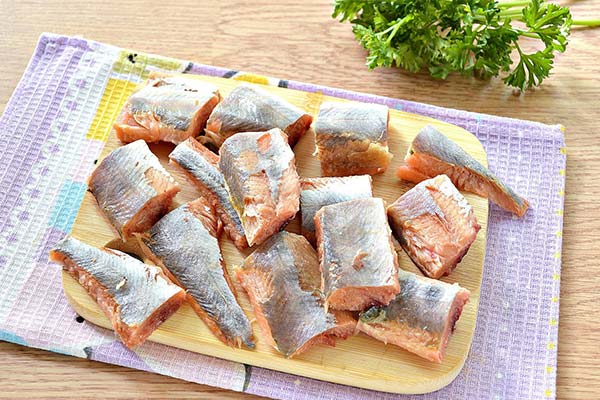
Other beneficial effects of kunja:
- Regulates blood pressure, water, acid, electrolyte balance.
- Reduces risk of vascular accidents.
- Participates in hematopoiesis, the processes of inhibition, excitation of the nervous system, the synthesis of hormones.
- Binds and removes free radicals.
- Promotes absorption of sugars and amino acids in the intestines.
- Prevents thrombosis, anorexia, anemia, digestive problems.
- Improves appetite.
- Fights insomnia.
- Supports thyroid function, adrenal glands, mucosal and skin health.
- Mineralizes bone tissue, tooth enamel, strengthens nails.
- Stimulates brain activity, speeds up thinking, increases cognitive abilities.
- Prevents Alzheimer's and Parkinson's diseases.
In addition, kunji meat, when consumed regularly, prevents cancer, accelerates the regeneration of damaged cell membranes, removes toxic substances from the body.
Harms and contraindications
You should not include in the diet of people with individual intolerance to the product, tendency to allergic reactions. Harmful to health fish caught in areas with unfavorable ecological situation. Such a product becomes a source of pathogens of fungal and bacterial diseases.
Salted, smoked fried fish should be avoided in case of acute pancreatitis, gastritis, peptic ulcer, pyelonephritis, hypertension and a tendency to edema.
How to choose and store
When buying trout, discard the carcasses:
- with brown gills that are loose on the head;
- A pungent fishy odor;
- Dull, soft skin;
- mechanical damage, dents, spots of fungal origin;
- cloudy eyes;
- no accompanying certificate.
A quality product has a fresh, natural smell, slightly bulging clear eyes, dense shiny and firm meat.
Salmon wrapped tightly in cling film can be kept in the freezer shelf nearest to the freezer for two days and in the freezer for 2-3 months. In a vacuum pack in the domestic freezer consumer properties are preserved for 3-4 months.
Where to buy and how much does it cost
In the European part of Russia, it is difficult to find kunja in stores, as its fishing is limited. The fish can be purchased at online marketplaces for a low price. Chilled fish sold at 350 rubles, fresh-frozen at 300-330 rubles per 1 kg.
How to cook fish kunju delicious: recipes
In home cooking, kunju is fried, smoked, baked in the oven, poached in a small amount of water, steamed and cooked on coals. Salted fish makes delicious sandwiches, holiday canapés, add the product to salads. The juicy, tender taste of kunja and the absence of bones opens up opportunities for culinary experiments.
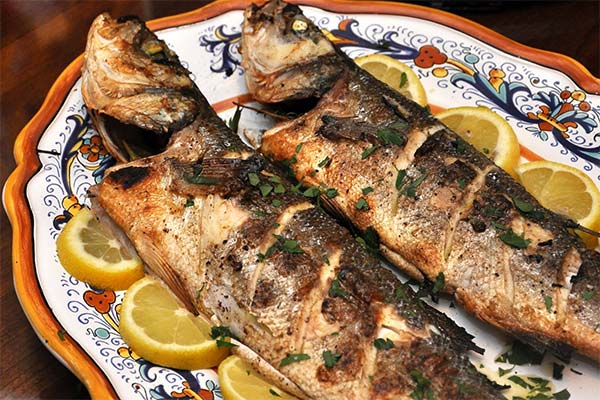
In the oven
Fish is baked in the oven in foil and without it.
In the first method of cooking, you will need a set of products:
How to bake:
- Thaw the sesame on the refrigerator shelf. Cut off head, tail. Cut off fins with kitchen scissors. Flatten out the belly from the anus to the head, remove the viscera. Rinse, pat dry with tissue paper.
- Turn the oven on to 180 degrees.
- Mix the seasoning and rub the fish with it. Put it on a baking tray greased with oil.
- Slice rings of onion, chop herbs. Place in the belly.
- Cook the kunja in the oven for half an hour.
To bake the product in foil, prepare the following ingredients:
- fish carcass;
- 1 piece each of large carrots, onions;
- 1 tbsp. sunflower oil;
- salt, pepper, bay leaf.
Cooking steps:
- Clean, gut the fish. Remove head, tail, fins.
- Line a baking tray with a sheet of foil and grease it with oil. Rub the carcass with salt and pepper, put it on foil.
- Put chopped onions and carrots in half rings. Add bay leaf, salt and pepper.
- Put vegetable mixture in belly.
- Wrap kunja tightly in foil or cover with a second sheet, carefully pinch and fold up the edges to prevent fish juice from running out.
- Put baking tray with contents for half an hour in the oven heated up to 180°C.
Serve with baked fish stewed with onions and sour cream carrots, crumbled rice, broccoli, green beans, risotto.
In the pan
For frying fish you will need sunflower oil, flour for breading, salt, pepper.
How to fry:
- Cut the sesame fish into fillets with skin. Make oblique cuts in each half. Cut into portioned pieces.
- Turn on a heated skillet with oil.
- Salt and pepper fish pieces.
- After half an hour, when the seasonings have been absorbed, coat the fillets in wheat flour, send them to the frying pan.
- Fry on each side over medium heat until crispy.
Serve fried fish with rice, oatmeal, buckwheat, potatoes in any form or with vegetable stew.
On the grill
To keep juiciness on the chargrill fry steaks with a thickness of at least 3 cm.
Ingredients:
- 1 kg of steaks;
- 1 orange;
- salt, spice kit for fish;
- 1 tbsp. vegetable oil.
Cooking algorithm:
- Wash, dry the steaks.
- Rub each piece with salt, spices.
- Squeeze the juice from the orange and combine with the oil. Pour the mixture over the fish.
- Stir to evenly distribute the marinade. Chill the steaks in a cool place for 30-60 minutes.
- Transfer the fish to a rack. Cook over the coals, turning occasionally, until tender.
Serve with greens and lemon slices.
How to pickle sesame properly.
To avoid the risk of helminth infections, refrain from salting fresh fish. The product is pre-frozen for at least two days at -20 degrees.

For salting 2 kg of kunja you will need:
- a liter of apple juice;
- 120 grams of coarse ground rock salt;
- 60 g of granulated sugar;
- 1 tsp each of black pepper, pink pepper, allspice.
How to salt:
- Defrost the fish in the refrigerator. You can't salt fish that have been placed in water or a microwave oven to defrost because of their altered structure.
- Gut the carcasses, cut off the head and tail. Make a cut along the backbone, cut into fillets. Cut into small 20-ounce pieces. Put in a bowl, cover, take out to the cold.
- Make brine by dissolving salt, sugar in apple juice. Add spices and set aside in fridge.
- When the brine gets the same temperature as the kunja, pour it on fish pieces, return the bowl with the contents to the cold.
- After an hour drain the brine. Lightly salted kunja is ready.
It is desirable to eat the fish the same day. The maximum shelf life of the product in the refrigerator is three days.
Recipe for kunja fish soup
For homemade fish soup from 1 kg of kundzha, prepare a set of products:
- 1 pc. carrot, celery rootonion turnip;
- 2 cloves of garlic;
- 2-3 potato tubers;
- parsley, dill;
- salt;
- a couple of bay leaves;
- 10 peas of black pepper, 2 oregano;
- 1 clove;
- 0.5 tsp. coriander.
How to boil:
- Pour 2 liters of water into a pot, put it on the stove on. Put all the spices and seasonings into the pot.
- Cut carrots in circles, celery root in large pieces (you can replace it with parsley root).
- Wash the onion, but do not peel it. Make crosswise cuts at both ends.
- Load the vegetables into the pot, simmer for a quarter of an hour.
- Remove the bay leaves, cooked onion, celery root, and carrots.
- Add the fish head, tail, and trimmings. After 20 minutes of boiling, remove fish parts, strain broth.
- Add coarsely chopped potatoes, garlic mashed with a knife, and portioned pieces of kunja.
- Cook for 15-20 minutes on low heat.
Allow to stand for 10 minutes, then serve with a sprinkle of greens.
Q&A
Most of the questions answered by consumers are related to the gastronomic characteristics of passable char.
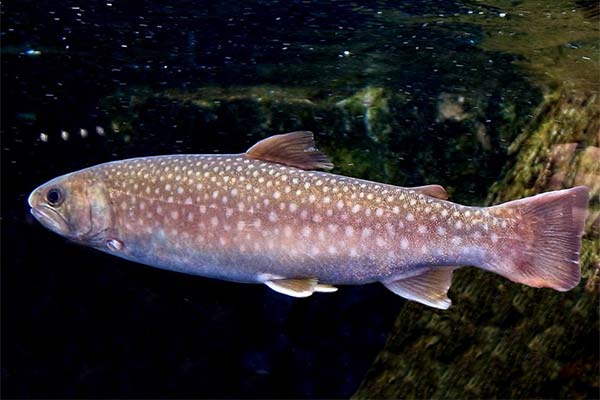
What does kunja taste like?
The meat of the char is juicy, tender, colored white or pink. It tastes just as good as pink salmon or trout.
Fatty or not?
The 100 g of the dietary product contains only 4 g of fat, which makes fish suitable for inclusion in the menu for weight loss.
Are there many bones in the fish?
As with other salmon species, the fish skeleton consists of the backbone and rib bones, which are easily separated when cutting the carcass into fillets. There are no small bones.
Kunja and kumja: one and the same?
Both species belong to the Salmon family, but the coho salmon belongs to the genus Golts and the coho salmon to the genus Salmon. The first species inhabits the Asian coast. Mullet enters the rivers of Europe, is acclimatized in America, Iceland, more kundzha is attached to fresh water.
There is a significant difference in coloration. Kunzha has light spots scattered along their brown sides, while kumzha have dark or red spots with a light halo.
The kundzha is little known to the general consumer community. It is better known to fishermen of the Far East. Only two countries - Russia and Japan - fish salmon on an industrial scale. Although scientists say that kunja is less palatable than Arctic char, its meat is just as nutritious. Nutritionists recommend eating kunja for obesity and to prevent weight gain.
«Important: All information on this site is provided for informational purposes only. for educational purposes. Consult with a health care professional before applying any recommendations. health care professionals before applying any of the recommendations. Neither the editors nor the authors shall be liable for any possible harm caused by materials."

